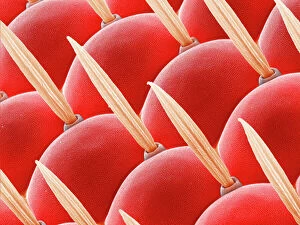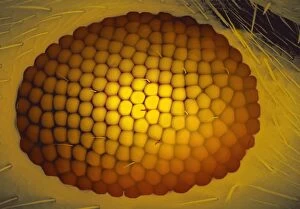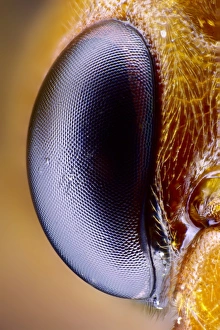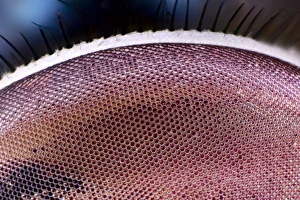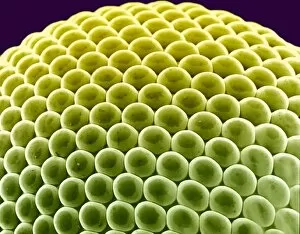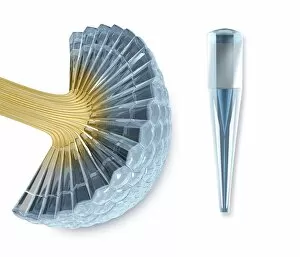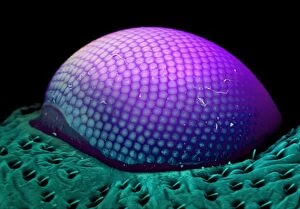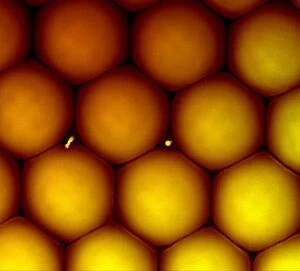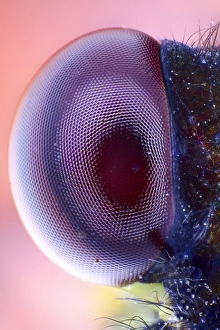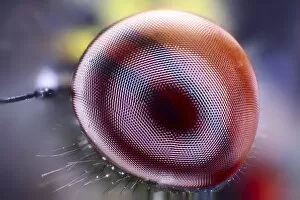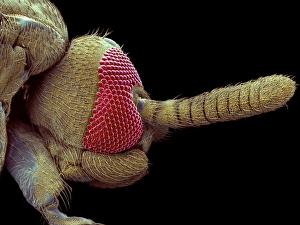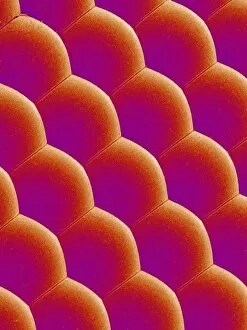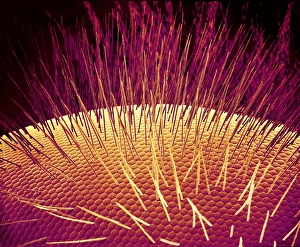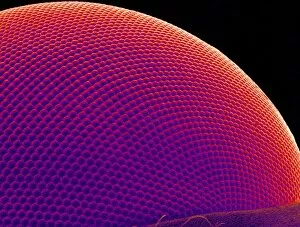Ommatidia Collection
"Ommatidia: The Mesmerizing World of Insect Vision" Step into the fascinating realm of ommatidia
All Professionally Made to Order for Quick Shipping
"Ommatidia: The Mesmerizing World of Insect Vision" Step into the fascinating realm of ommatidia, the compound eyes that grant insects a unique perspective on their surroundings. These intricate structures, resembling tiny hexagonal tiles, provide a window into an extraordinary visual world. Imagine peering through the SEM Z340 / 0698 lens and discovering the compound eye of a fly. Countless ommatidia converge to form this remarkable organ, granting flies an exceptional ability to detect movement with astonishing precision. Now shift your gaze towards the dragonfly head captured in C018 / 2394. Its ommatidia showcase a mesmerizing arrangement that allows these agile predators to spot prey from afar, making them irresistible hunters in flight. Ants too possess their own version of these captivating eyes. Observe the ant compound eye in SEM C018 / 0552 or focus on C018 / 2440 for a closer look at its individual ommatidia. Through these lenses, we gain insight into how ants navigate their complex underground colonies with unparalleled efficiency. Butterflies enchant us not only with their vibrant wings but also with their intricate eyesight. Delve into SEM C016 / 9382 and witness the beauty of butterfly ommatidia up close – each one contributing to its ability to perceive colors and patterns that guide it through nature's tapestry. The bluebottle fly's eye reveals yet another facet of insect vision – an iridescent marvel that captures our attention effortlessly. Behold its striking blue hue as you explore this wondrous creation through your own lens. Fruit flies may be small creatures, but they possess mighty compound eyes worthy of admiration under SEM scrutiny. Examine them closely and appreciate how even such minuscule organisms are equipped with incredible visual acuity (SEM image). Gall midges offer us another glimpse into this captivating world; observe SEM C016 / 9394 to witness their unique ommatidia arrangement.

